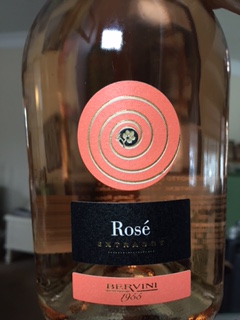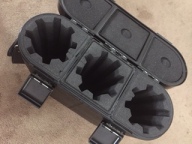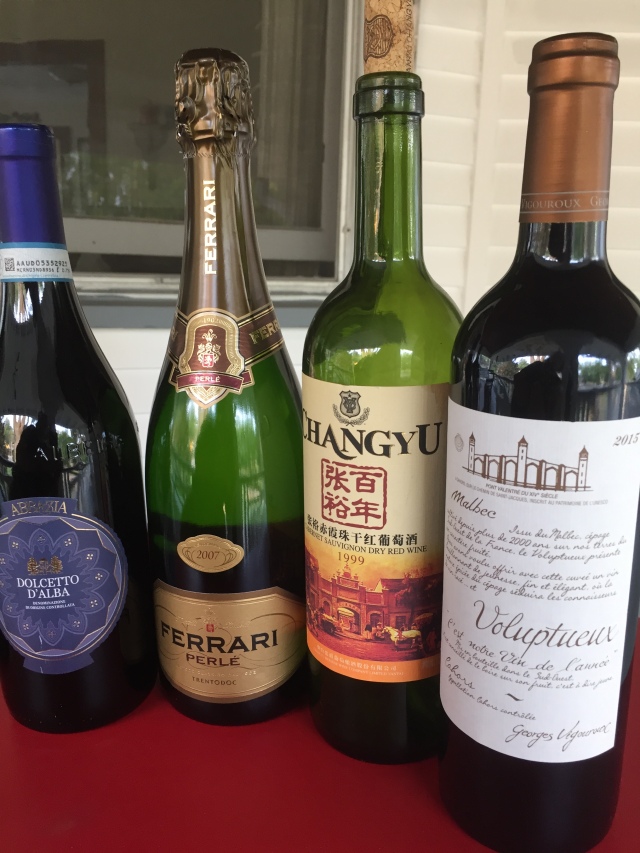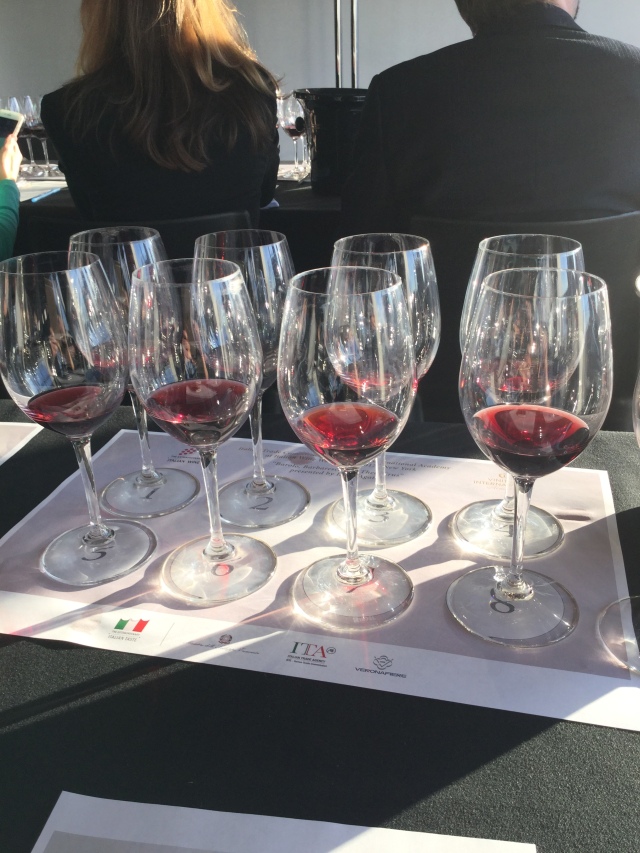It doesn’t matter whether you drink from 50-cent water glasses or $100-a-pop fine crystal – if you love the grape, then you have a stash of souvenir wineglasses.
I’ve collected these over the years, starting long before I actually knew anything about wine. I don’t need the glasses, don’t even drink from most of them. I have a cupboard full of divine Riedels and Marquis by Waterford that I use every day.
Yet I keep these, I think because they remind me of good times with good friends. That stemmed glass in the back row with the big “2” is from 2 Lads Winery on Mission Peninsula in northern Michigan. I was there with my sister Margie sometime in the last century, shortly after the winery opened. We drank our way up Mission and Leelanau Peninsulas, stopping at any winery with a pretty lake view (which was most of them).
Another sister trip got me the beer glass in the upper righthand corner. I was with my sister Carol in Dubrovnik. It was hot that day and we exhausted ourselves shopping, so we stopped at a sidewalk café for a cold glass (or two) of pivo. I remember having to practically drag her away because she couldn’t stop staring at our handsome waiter.
The stemmed glass in the upper left corner is from the annual tasting fundraiser for the International Women’s Air and Space Museum on Cleveland’s waterfront. It’s a small affair, as tastings go, so it’s an easy evening for strolling and talking. I never miss it. Last year they switched to the small stemless glass, second from left in the front row. I brought the stemless, ridge-bottom glass in the corner from the Island Wine Festival at rowdy Put-in-Bay. It was my friend Anne’s maiden voyage on the Miller Ferry to the Lake Erie Islands – how could that be, I wondered, when she’s lived here all her life? – and she was smitten.
The tall water bottle from Livermore Valley in California isn’t a wineglass, but it says, “Live a little more” – how could I toss away that cheery message? Livermore was one of the excursions offered at the 2016 Wine Bloggers Conference in Lodi; this year we’ll meet in Walla Walla, Washington, and I know I’ll snag at least one good glass there, too. I might even drink from it while I’m there (twist my arm).
Wine Lingo: Avvinare i bicchieri = an Italian wineglass custom. Clean glasses aren’t ready to drink from until the server pours a little wine into the glass, swirls it, then tosses out the used wine. Then the glass is ready. Author Karen MacNeil, in The Wine Bible, called it a “baptism of sorts.”

Vino ‘View: I took half a dozen photos of this bottle, trying to capture its gorgeous salmon color. We’ve had a few warm days here in the northern states – our harbinger of spring – and they sparked my taste for a nice rosé. This is Bervini 1955 NV Spumante Extra Dry Rosé (11 percent alcohol, $17.99), a sparkling wine that tastes as pretty as it looks, filling my mouth with red berry flavor, floral notes and plenty of tingly acidity. The bubbles come fast and tiny, making it even more elegant. Bervini rosé is a blend of Glera, best known as the white grape that produces Prosecco (no surprise, since the vineyards border the Prosecco region of Italy) and Raboso, a red grape that adds backbone, color and some tannins to the more demure Glera. I drank it before a salmon salad dinner (a nod to the wine’s color) with a berry vinaigrette and just a bit of blue cheese.
[The Bervini 1955 NV Spumante Rosé was sent to BigSexyReds for review.]
Cheers!
Mary











 Here’s all you really need to remember: anyone who’s literate can understand enough to know what they’re buying. You just need to identify whether
Here’s all you really need to remember: anyone who’s literate can understand enough to know what they’re buying. You just need to identify whether 


 Vino ‘View: A delicious example of an NV wine is Astoria’s
Vino ‘View: A delicious example of an NV wine is Astoria’s  [Jamie Stewart, brand manager of Cantine Ferrari Trento, with a few of the winery’s 19th-century gadgets.]
[Jamie Stewart, brand manager of Cantine Ferrari Trento, with a few of the winery’s 19th-century gadgets.] Vino ‘View: Grappa Segnana Solera Selezione (42 percent alc., about $40 US) After I was treated to a taste of this sublime spirit I couldn’t pull out my wallet fast enough; I had to take a bottle home. Made of 60 percent Pinot Nero and 40 percent Chardonnay, it blends five vintages in a solera process: some brandy from the oldest French oak barrels is bottled, then brandy from each vintage’s barrels tops off the next oldest, and the progressive blending continues each year. The barrels impart a roasted, vanilla, smoky flavor mixed with dark fruit and a long, fruity finish. Don’t look for Grappa Segnana on store shelves in the US; you’ll have to order it online. Google for the best price.
Vino ‘View: Grappa Segnana Solera Selezione (42 percent alc., about $40 US) After I was treated to a taste of this sublime spirit I couldn’t pull out my wallet fast enough; I had to take a bottle home. Made of 60 percent Pinot Nero and 40 percent Chardonnay, it blends five vintages in a solera process: some brandy from the oldest French oak barrels is bottled, then brandy from each vintage’s barrels tops off the next oldest, and the progressive blending continues each year. The barrels impart a roasted, vanilla, smoky flavor mixed with dark fruit and a long, fruity finish. Don’t look for Grappa Segnana on store shelves in the US; you’ll have to order it online. Google for the best price.
